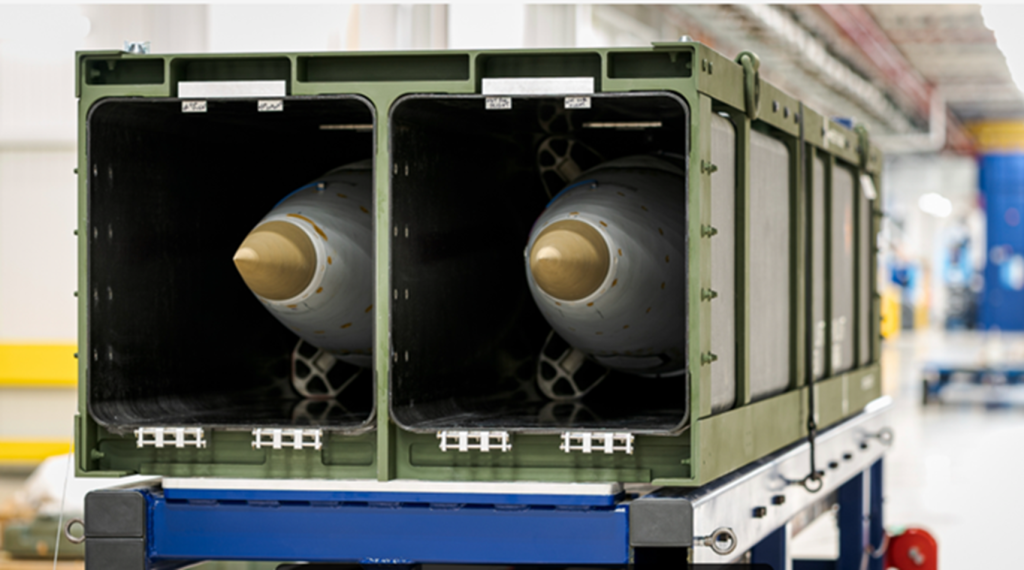US Army tests PrSM in soldier-led first
The US Army has fired the Precision Strike Missile (PrSM) in a soldier-led trial at the White Sands Missile Range for the first time, according to a 11th December press release from Lockheed Martin. Using only US Army personnel, two missiles were fired from an M142 HIMARS launcher against a target set, demonstrating the system’s readiness for adoption into service, the press release states. The limited user test may be used to support a further release of funding and additional production of the missile.
This rounds out a busy year for the PrSM programme. A 5th December announcement revealed that the US Army was seeking a missile with a range exceeding 1,000 km under its Increment 5 development. This range means a new launch vehicle other than the M142 and M270A2 that the Increment 1 missile is designed for, indicating that the Autonomous Multi Domain Launcher (AML), which is currently under development, might be a suitable option.
Alternatively, the Lockheed palletized launch system, which was shown at the Human-Machine Integration Summit IV in November mounted on a 10×10 MKR18 truck, could potentially carry a longer missile providing greater range – if it enters service of course.
In June, the 3rd Multi-Domain Task Force conducted a SINKEX in the Indo-Pacific, firing two PrSM missiles from an that hit a moving target at sea. That particular exercise was conducted in conjunction with “other joint assets,” according to the US Pacific Command. The Increment 2 missile is expected to include a seeker enabling it to target moving targets like air defence systems and ships, but it has not been made clear whether the SINKEX was the work of the Increment 1 missile.
Lockheed was awarded a $219 million Early Operational Capability production contract for PrSM in March, marking the fourth contract for the missile. The first missile was only delivered to the US Army in December 2023 following an accelerated development programme to get the design up and running as the US juggles the dual threat of Russian escalation in Europe, and growing confidence of the People’s Liberation Army in the Indo-Pacific.
The recent progress has been rapid, but the programme that led to the missile was actually initiated in 2013. The Army Acquisition Executive (AAE) decided to accelerate the programme in 2020 leading to a single vendor selection and critical design review in 2021.
Tech profile: PrSM
The Increment 1 PrSM is described as a “surface-to-surface” missile with a range of 60 km to 499 km+. Its guidance system consists of an inertial navigation unit and GPS, which indicates that it is only really capable of engaging static targets, unless receiving real time intelligence. The warhead is described as “enhanced lethality designed for the PrSM target set.” Two missiles can be carried on an M270 launcher and it is required to receive targeting data from the launcher, and engage targets, in an electromagnetically challenging environment. As mentioned above, the Increment 2 missile, to be fielded from 2026, will add a seeker. This will be key if the missile is to engage moving or mobile targets like other missile launchers and air defence systems. It is worth noting that the Russian equivalent, the 9M723 Iskander ballistic missile, can be fitted with a seeker and is reportedly able to strike within a few metres of a target – which is plenty close enough when it is armed with a 480 kg warhead. So, it is arguably a necessary requirement for PrSM to carry a similar capability.
Increment 3 will add a cluster warhead to the system by 2029 with smart munitions that can independently seek out targets and engage them within a given area. Increment 4 is expected to push the range out to 1,000 km through the combination of a liquid fueled ramjet engine and conventional solid rocket fuel. This capability is scheduled for 2027. It is likely positioned to help US forces in the Indo-Pacific.
A video from Lockheed Martin showing an engagement vignette with a PrSM where the target is identified by an F-35. Credit: Lockheed Martin.
In terms of targeting, PrSM can presumably receive targeting data from a Lockheed Sniper targeting pod, which provides networking solutions for 4th generation and 5th generation jets like the F-16 and F-35. It can also connect air assets to ground based assets like HIMARS and M270. This helps to answer one of the critical challenges in developing long-range precision strike munitions; targeting. Precision munitions need precision ISR, without it, they will accurately miss the target. This can be done remotely using space-based assets and other forms of intelligence, but that process can take time and is not suitable for mobile targets. A sniper targeting pod that can relay data to a ground-based launcher would enable a western force – presumably with its airpower operating forward to conduct some form of suppression of enemy air defence or offensive counter air mission – to engage air defence systems and other assets that the F-35 identifies but chooses not to engage. This targeting approach is likely far more survivable than the big-wing ISR that has tended to define western operations.
Calibre comment
It is encouraging to see the continued development of PrSM as it represents a key tactical weapon for US land forces. Without PrSM or a similar weapon, they would be hard pressed to engage targets beyond the reach of a conventional guided MLRS – around 120 km. This is sufficient for a lot of targets, but will struggle to put things like the S-400 air defence system, Iskander, or strategic command centres at risk. Holding these types of assets at risk is seen as key to multi-domain operations; although the impact of striking key nodes is unpredictable, it is apparent that long-range air defence and precision strike weapons can push a force back and make it hard to achieve tactical or operational superiority. This is why PrSM is important, it gives US forces, and potentially allies, the ability to reach into an adversary’s operational depth and destroy the systems that are built to unpick the western way of war.
By Sam Cranny-Evans, published 16th December 2024.

PrSM’s future increments will be very important in enabling the US Army to contribute meaningfully in the event of a war with China. Credit: Lockheed Martin.

Sign Up for Updates!
Get insider news, tips, and updates. No spam, just the good stuff!






